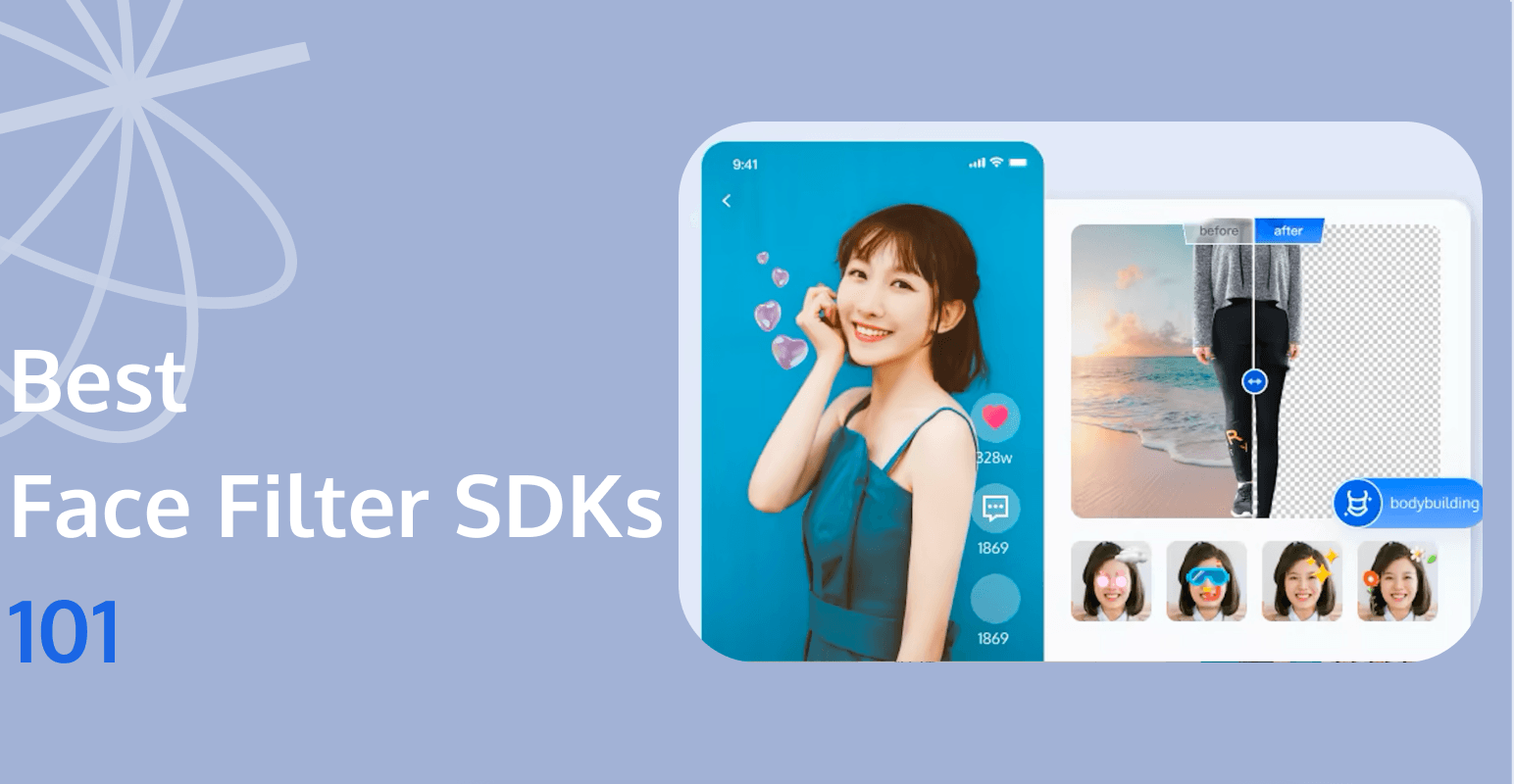
Introduction
Augmented reality facial beauty technology has revolutionized the way we interact online, offering users the ability to enhance their appearance in real-time during video calls or live streams. With the rise of web-based applications, developers are constantly innovating to create seamless and engaging experiences through face filters SDKs.
In this comprehensive comparison guide, we will analyze and compare the features of leading web-based facial beauty products.
Key Criteria for Selecting Face Filters SDKs
How can we choose the right Face Filters SDK for our needs? Based on real development experience, we have outlined the following criteria:
- Low Runtime Cost: Reducing runtime resource consumption is crucial. It can free up more processing power for other tasks on the device, ensuring smooth operation of applications across different devices, optimizing overall performance. For Face Filter SDKs, low runtime cost means that while achieving exquisite filter effects, the device will not experience lags, providing users with a seamless experience.
- Easy Integration: For developers, the integration difficulty of an SDK is a major consideration. An easily - integrated Face Filter SDK can significantly shorten the development cycle and reduce development costs. It can be smoothly incorporated into the existing web application architecture, minimizing technical challenges and debugging time, enabling developers to bring applications with face filter functions to market faster.
- Enough Preset Effects: A wide variety of preset effects is a major attraction for users. These preset effects cover various styles of filters, fun stickers, and practical beauty - enhancing functions. Users can quickly find suitable effects without complex operations, meeting their needs in different scenarios and increasing the fun and practicality of the application.
- Rich features: In addition to basic face filter functions, SDKs with more extended features are more competitive. For example, features such as support for 3D animation, virtual try - ons, and facial expression tracking can greatly enhance user engagement and retention rates, making the application stand out in the market.
In-Depth Comparison of Mainstream Face Filters SDKs

- Banuba: Banuba is the most popular AI face filters SDK, offering a wide range of facial AR features including FaceFilters, facial modification, virtual try-on, 3D avatars, hair segmentation, and virtual backgrounds. It provides high-precision, high-performance real-time processing and supports multiple effect overlays, delivering a mature solution for facial AR beauty effects.
- DeepAR:DeepAR is also a powerful cross-platform AI facial augmented reality solution. However, in terms of web tracking capabilities, DeepAR's web version does not support hair color modification or pupil detection, making it more suitable for tracking scenarios with lower accuracy requirements. Additionally, it offers fewer preset effects. On the functionality side, DeepAR also supports body tracking and virtual shoe try-ons.
- Tencent Web Beauty AR:Tencent Web Beauty AR is a lightweight facial AR SDK that includes a comprehensive range of features such as common beauty effects, virtual try-ons, 3D avatars, and gesture detection. It comes with 15 facial beautification effects, 34 makeup or sticker filters, and 19 image filters. Developers can quickly build beauty and makeup applications without needing any design resources. Additionally, it includes a web-based effects studio, specifically tailored for web scenarios. However, it currently does not support hair color modification now.
- Aliyun Queen Web SDK:Al Queen Web SDK also offers a web SDK that provides common features such as facial beautification, makeup, stickers, and 3D avatars. It does not support hair color modification or virtual try-ons for colored contact lenses. While it provides preset effects, it lacks a studio for creating custom effects, making customization more costly.
- Visage Technologies:Visage Technologies offers solutions for virtual makeup try-on, face try-on, ear try-on, facial analysis, and expression analysis.
- Perfect corp:Perfect Corp provides a comprehensive AI-based virtual makeup try-on solution, as well as options for virtual nail try-ons, jewelry try-ons, hair color try-ons, and skin analysis.
- Jeeliz:Jeeliz is an open-source face tracking and try-on SDK. It detects and tracks the face in real time from the camera video feed captured with WebRTC. It also provides various demonstrations using the main WebGL 3D engines.
- Orbo:Orbo is an AI-driven beauty product SDK that offers features such as virtual makeup try-ons, skin analysis, skin enhancement, and hair color changes.
- XZIMG:XZIMG can now support Web AR too. It not only supports facial effects but also enables virtual shoe try-ons.
Selection of Face Filters SDKs for Different Scenarios
- Webcam Apps: These scenarios require more diverse features and functionalities to attract more users. Feature-rich SDKs such as Banuba, DeepAR, Tencent Web Beauty AR, and Aliyun Queen are more suitable choices.
- Virtual Makeup Apps: Virtual makeup requires SDKs that offer superior customization and more precise facial alignment, particularly for scenarios involving eyeshadow and eyeliner. More accurate point tracking ensures a more realistic try-on experience. Banuba, Tencent Web Beauty AR SDK, and Perfect Corp are better choices for these needs.
- Headwear Try-On Apps: This requires the ability to easily customize try-on materials and effects, adapt to a wider range of head rotation angles, and often necessitate support for 3D rendering. Banuba, Tencent Web Beauty AR SDK, and Perfect Corp are all well-suited.
- Video Chat Apps: Online chatting demands higher real-time performance and privacy protection for video content. Better performance ensures higher video frame rates, while VR portrait functionality ensures efficient communication while safeguarding user privacy. Both Banuba and Tencent Web Beauty AR SDK can guarantee efficient and accurate facial expression tracking.
Conclusion
Among numerous web-based Face Filter SDKs, each has its unique advantages and applicable scenarios. Tencent Web Beauty AR SDK stands out with its powerful functions and affordable price, showing strong competitiveness. Currently, it offers a 28 - day free trial, and developers are welcome to experience it. If you have any questions during the selection process, feel free to communicate with the relevant technical teams to make the choice that best suits your project.


